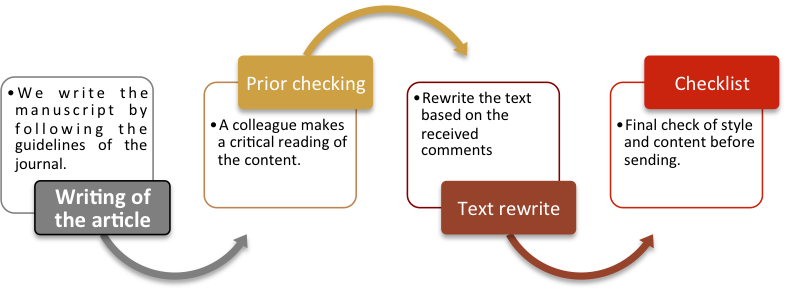Author: Rosa García-Ruiz – Translation: Erika-Lucia Gonzalez-Carrion
Once it is already done the manuscript that collects our best contribution to the advancement of scientific knowledge in our field of study, and once selected the journal to which we are going to send it for evaluation, it is necessary to make a final review.
Previously, we have asked a colleague to make a critical reading of it, as we suggested in a previous post, The prior checking, to guarantee an excellent job.
Before sending to the journal, many of them, like Comunicar, suggest us to make the checklist, and we should devote a deep reading and enough time in order not to make mistakes.

We must take into account that some journals will reject the article without evaluation by experts, because the manuscript does not adjust to the regulations, without giving us a second chance.
Sometimes, when we have devoted a lot of time to the writing of the manuscript and have read it several times, or if different authors have prepared the article, we are not able to see errors that an editor will immediately detect. Therefore, it is extremely important to check if the journal offers a checklist, and if not, in Comunicar we provide some guidelines to ensure this process and to send the article successfully.
1. Cover Letter
Once the journal’s regulations have been carefully read, we will check how they request our data (name and last name, institution, email, ORCID…), the manuscript metadata in a document different from the one of the article (title, keywords and abstract) and the transfer of rights under the terms established by the editorial board, as well as the relevant permissions for the use of images or sensitive data.
2. Manuscript
Check that the manuscript adjusts to the structure of the scientific and academic format that we have decided to contribute to our work: research, experience, revision, etc. The writing and grammar style are correct. All the sources that have been consulted in the text and their corresponding bibliographical references are included. The anonymity of the authors has been ensured. It has been verified that there are no typographical errors. It has undergone a plagiarism detection program.
3. Formal aspects
Check that the article adjusts faithfully to the guidelines of the journal, whether or not there is a template to write it: extension, font size, position of tables and figures, format of citations and references, etc. Any failure to comply with the journal’s guidelines may be a reason for dismissing the article without subjecting it to an unappealable evaluation.
Take yourself a time to make the checklist. Without doubt, you will delete mistakes, sometimes unconscious, and you will be ready to send your article to the journal. Go ahead!
